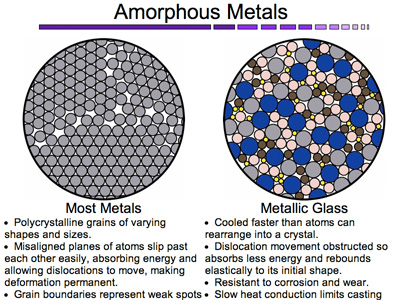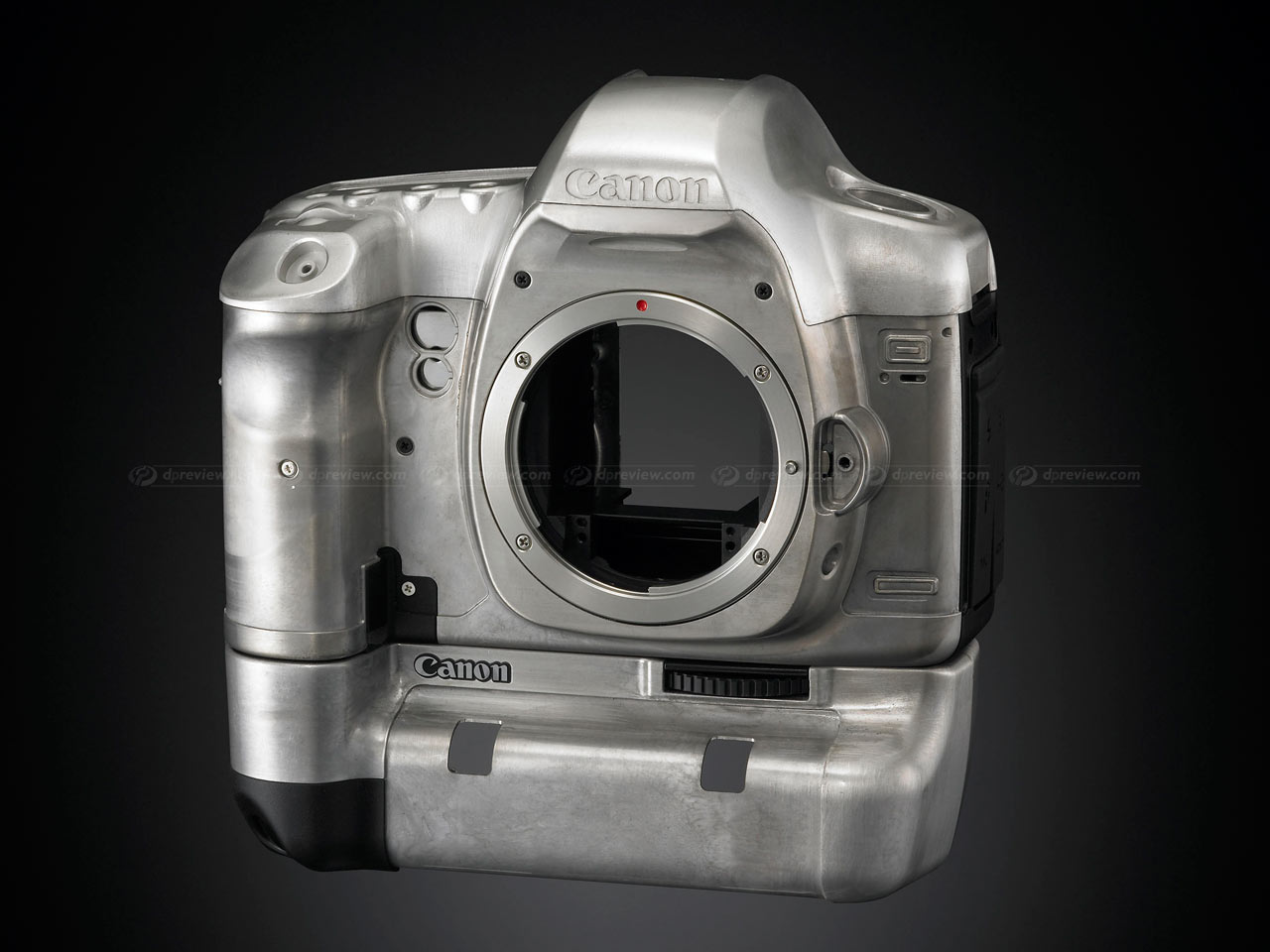Do you know Liquidmetal alloys ?
Liquidmetal alloys are a revolutionary class of materials that redefine performance, process, and design paradigms. Liquidmetal alloys represent the first enabling materials technology since the creation of thermoplastics and possess characteristics that make them superior in many ways to other popular high performance materials.
Liquid Metal
First, they have an “amorphous” atomic structure, which is unprecedented for bulk structural metals. Finally, our metal alloys are the first commericially available metals with process technologies similar to plastics. Liquidmetal and Vitreloy are commercial names of a series of amorphous metal alloys developed by a California Institute of Technology (Caltech) research team and marketed by Liquidmetal Technologies. Liquidmetal alloys combine a number of desirable material features, including high tensile strength, excellent corrosion resistance, very high coefficient of restitution and excellent anti-wearing characteristics, while also being able to be heat-formed in processes similar to thermoplastics. Liquidmetal was introduced for commercial applications in 2003.
The alloy was the end result of a research program into amorphous metals carried out at Caltech. It was the first of a series of experimental alloys that could achieve an amorphous structure at relatively slow cooling rates. For example, amorphous wires could be fabricated by splat cooling a stream of molten metal on a spinning disk. Because Vitreloy allowed such slow cooling rates, production of larger batch sizes was possible.
Liquidmetal alloys contain atoms of significantly different sizes. They form a dense mix with low free volume. Unlike crystalline metals, there is no obvious melting point at which viscosity drops suddenly. Vitreloy behaves more like other glasses, in that its viscosity drops gradually with increased temperature. At high temperature, it behaves in a plastic manner, allowing the mechanical properties to be controlled relatively easily during casting. The viscosity prevents the atoms moving enough to form an ordered lattice, so the material retains its amorphous properties even after being heat-formed.
The alloys have relatively low softening temperatures, allowing casting of complicated shapes without need of finishing. The material properties immediately after casting are much better than of conventional metals; usually, cast metals have worse properties than forged or wrought ones. The low free volume also results in low shrinkage during cooling. For all of these reasons, Liquidmetal can be formed into complex shapes using processes similar to thermoplastics, which makes Liquidmetal a potential replacement for many applications where plastics would normally be used.
Due to their non-crystalline (amorphous) structures, Liquidmetals are harder than alloys of titanium or aluminum used in similar applications. The zirconium and titanium based Liquidmetal alloys achieved yield strength of over 1723 MPa, nearly twice the strength of conventional crystalline titanium alloys (Ti6Al4V is ~830 MPa), and about the strength of high-strength steels and some highly engineered bulk composite materials (see tensile strength for a list of common materials). Although strong, these early batches could easily be shattered if struck. Newer casting methods, adjustment to the alloy mixtures and other changes have improved this.
Liquidmetal combines a number of features that are normally not found in any one material. One of the first commercial uses of Liquidmetal was in golf clubs made by the company, where the highly elastic metal was used in portions of the face of the club. These were highly rated by users, but the product was later dropped, in part because the prototypes shattered after fewer than 40 hits.[6] Since then, Liquidmetal has appeared in other sports equipment, including the cores of golf balls, skis, baseball and softball bats, and tennis racquets.
The ability to be cast and molded, combined with high wear resistance, has also led to Liquidmetal being used as a replacement for plastics in some applications. It has been used on the casing of late-model SanDisk “Cruzer Titanium” USB flash drives as well as their Sansa line of flash-based MP3 player, and casings of some mobile phones, like the luxury Vertu products, and other toughened consumer electronics. Liquidmetal has also notably been used for making the SIM ejector tool of some iPhone 3Gs made by Apple Inc., shipped in the US. The same qualities lend it to be used as protective coatings for industrial machinery, including petroleum drill pipes and power plant boiler tubes.
You might also like
| Amorphous Metal What is Amorphous Metal ? An amorphous metal... | What are Magnesium Alloys ? Magnesium Alloys Magnesium alloys are mixtures... | Copper Alloys What are Copper Alloys ? Copper is one of... | Zinc Alloys What is Zinc Alloy ? Zinc Alloys are combinations... |




 Alloy Suppliers
Alloy Suppliers
 Aluminum
Aluminum
 Aluminum Extrusions
Aluminum Extrusions
 Copper-Brass-Bronze
Copper-Brass-Bronze
 Nickel
Nickel
 Magnets
Magnets
 Stainless Steel
Stainless Steel
 Stainless Steel Tubing
Stainless Steel Tubing
 Steel Service Centers
Steel Service Centers
 Titanium
Titanium
 Tungsten
Tungsten
 Wire Rope
Wire Rope